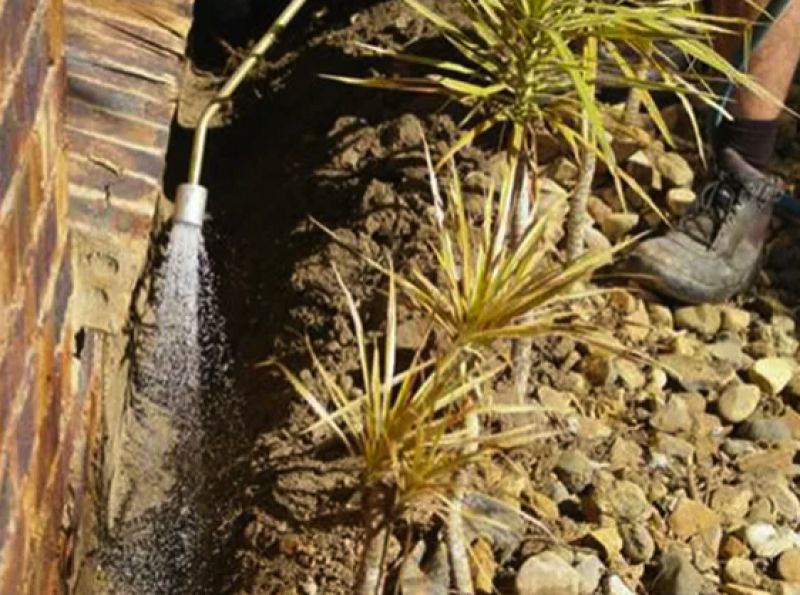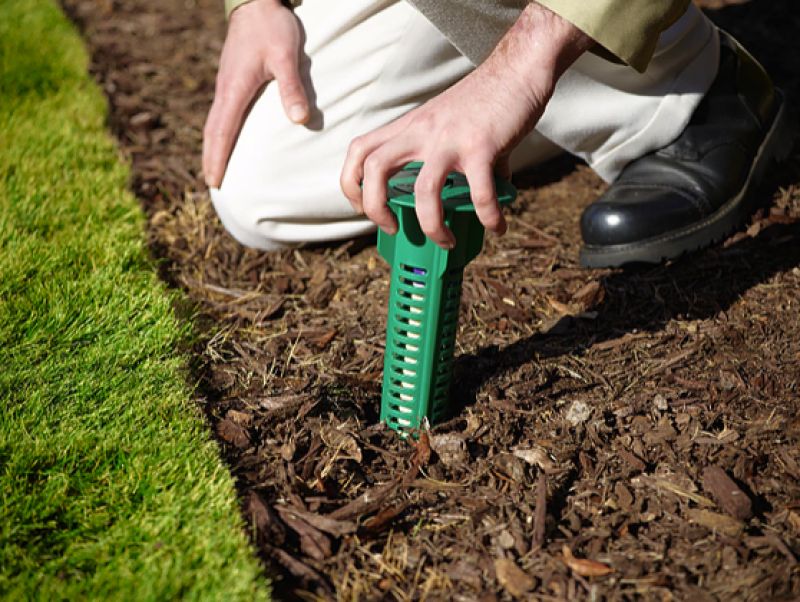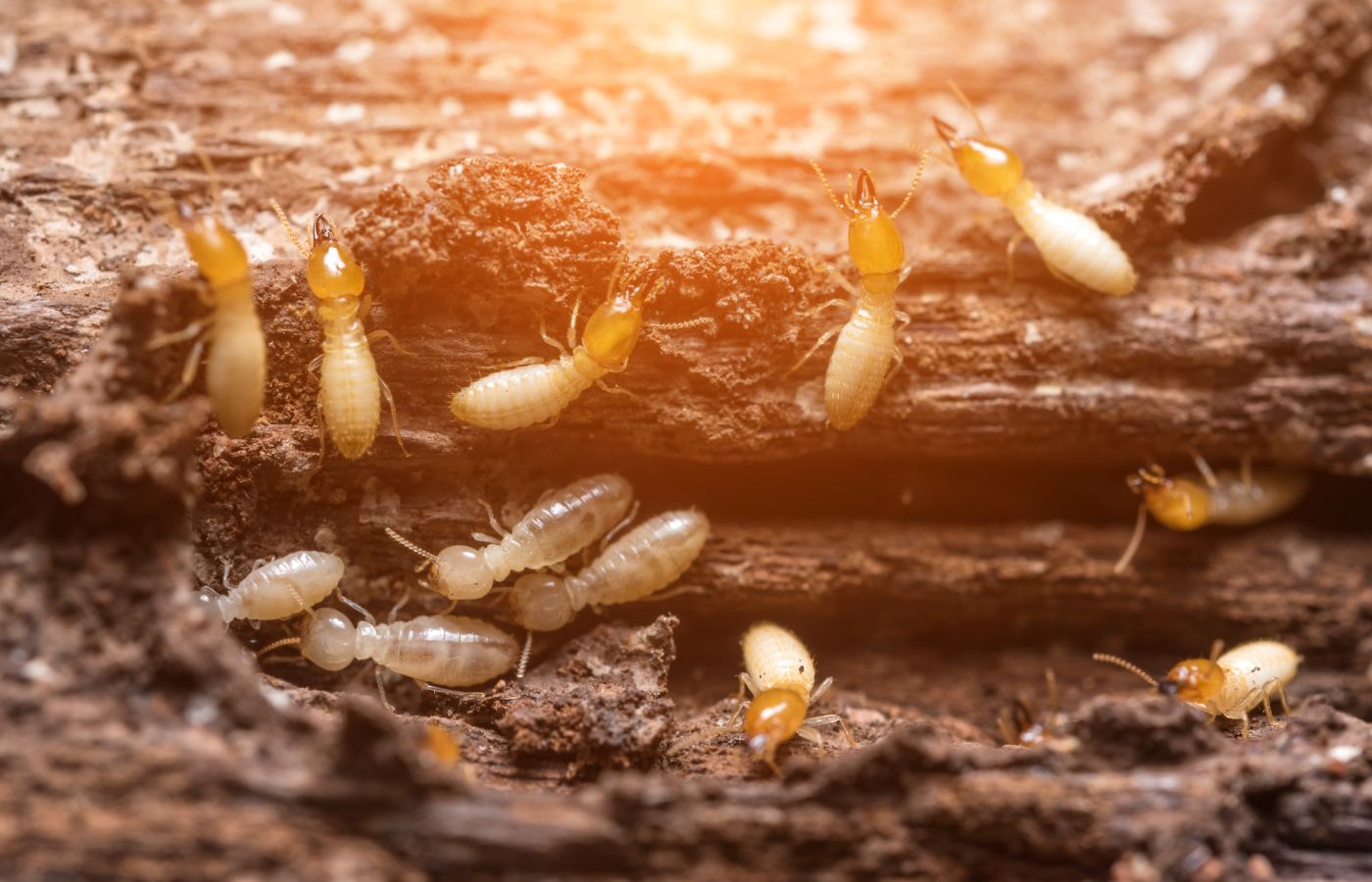It’s a simple question, but you should be wary of a quick response. There are a number of factors to bear in mind when deciding the best termite treatment for your property. Advice and guidance from a trusted pest professional with years of experience is essential. When advising you about the best termite treatment option, a pest professional will consider:
- the construction of the house,
- the soil type, and
- the slope of the block.
They’ll also determine the species of termites they’re dealing with. Each property is different and the termite infestation will be unique.
You’ll want to consider either of the two best termite treatment options when it comes to getting rid of termites from your home or property.


Liquid soil termite treatments
A professional liquid soil termite treatment creates a complete treatment zone around your home (and under it, for houses with a subfloor). A quality treatment works with the physical elements of your house e.g. the concrete slab or metal shielding (‘ant caps’) on your piers. The combination of treatment and physical features prevents termites from entering your property unnoticed. To access your home, they’ll need to build mud tubes on the outside of structural elements. When they do this, they’ll be spotted during regular inspections, and they can be dealt with.
Generally speaking, people prefer a liquid soil treatment for protecting their property because it is often viewed as a “barrier”. However, it’s not possible to apply a liquid soil treatment in all situations. Types of soil and issues with construction can prevent the creation of a complete and continuous treatment zone. Gaps in a treatment zone can present opportunities for termites to get access to your property. In such situations, termite monitoring and baiting systems provide the best option.
Termite baiting
An in-ground termite baiting system involves placing termiticide bait rods in monitoring stations around the perimeter of your building. These stations intercept termites on their way to your property. A qualified termite professional inspects the stations every 3-6 months. When termites eat the bait, they take the insecticide back to the nest, where it kills the colony and protects your home.
As with a liquid soil treatment, the successful performance of a monitoring and baiting system depends on its being the correct choice for your situation. With correct professional installation and regular inspections, termite baiting systems are an excellent way of protecting your property against termites.
Often, you can choose between liquid soil treatments or monitoring and baiting systems. As soil treatments involve applying chemicals to the soil, you may prefer the more environmentally friendly monitoring and baiting system option. Also, if your property is susceptible to flooding that can wash away a soil treatment, a monitoring and baiting system will be the better option.
In summary, you need to weigh up the pros and cons of each option. Be sceptical about a company that pushes one treatment over another. They may have a sound reason, but check that you agree.
Whatever your pest control problem, a pest control professional should be able to offer a variety of suitable treatment options. Each option will have costs, so budget is always a consideration.
All things considered, there isn’t an off-the-shelf solution that’s best for everyone. At the end of the day, you need to get trusted professional pest control advice. At Spiderman SE Eco Pest Management, we’ll ensure you get the right termite treatment for your home and your situation.

